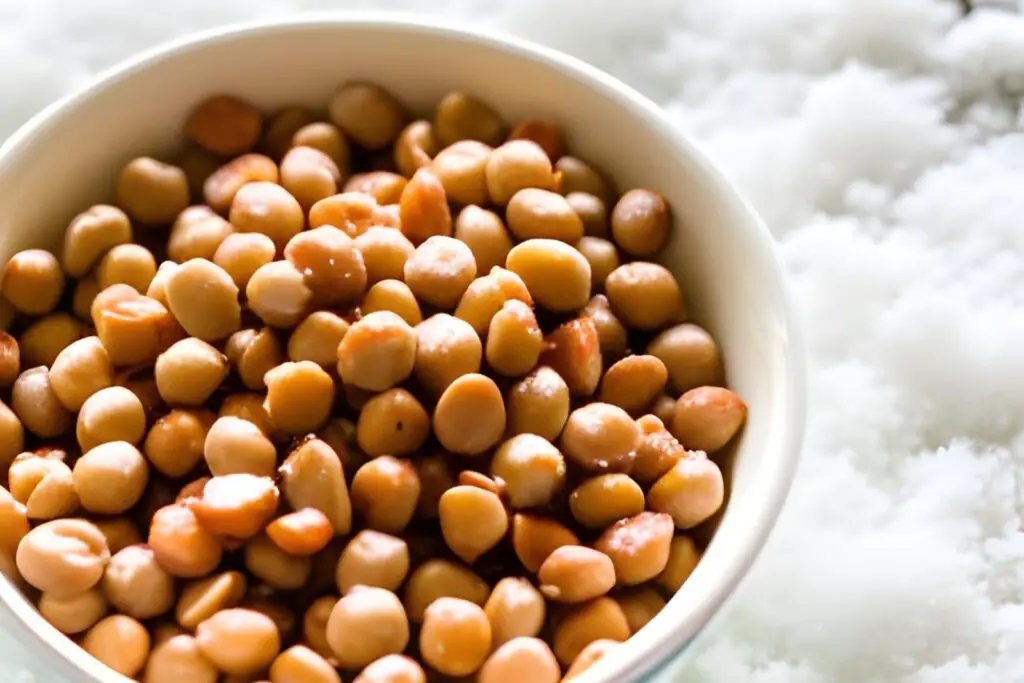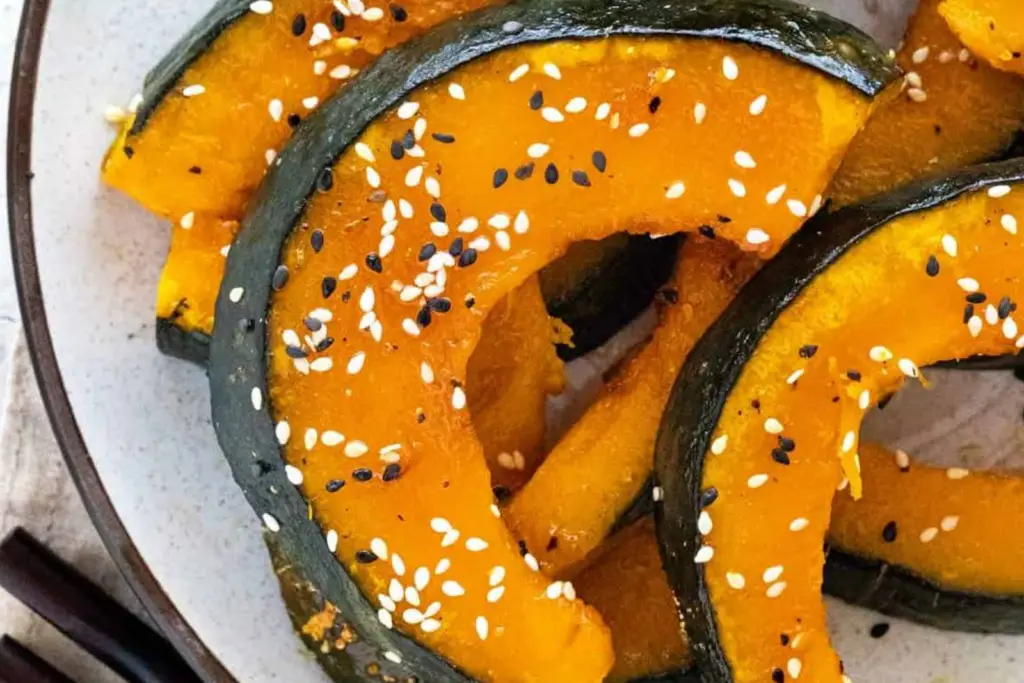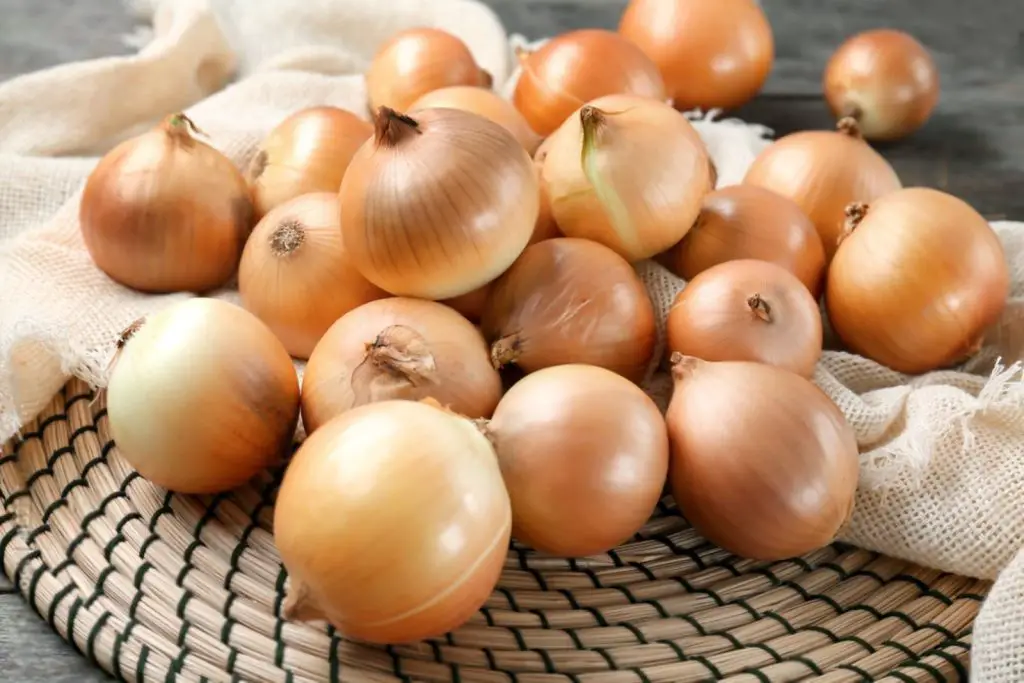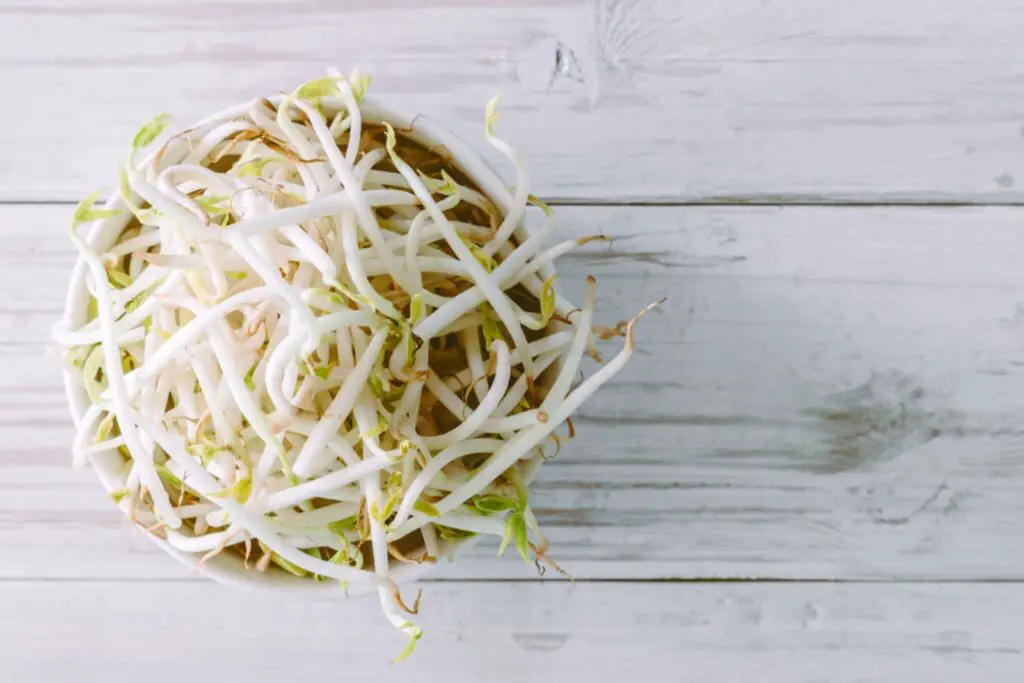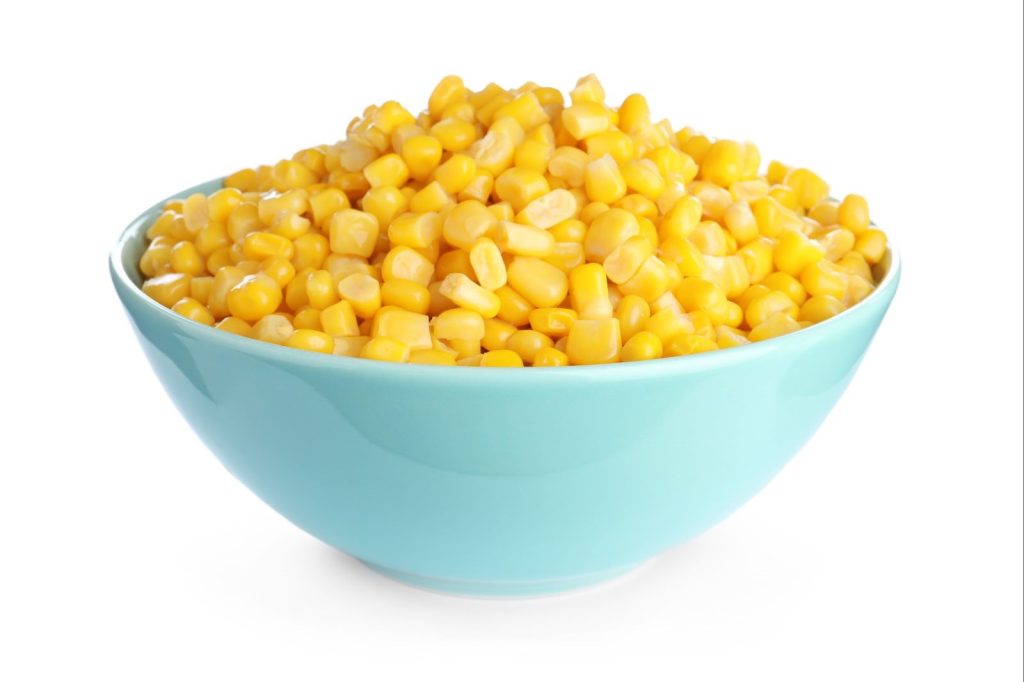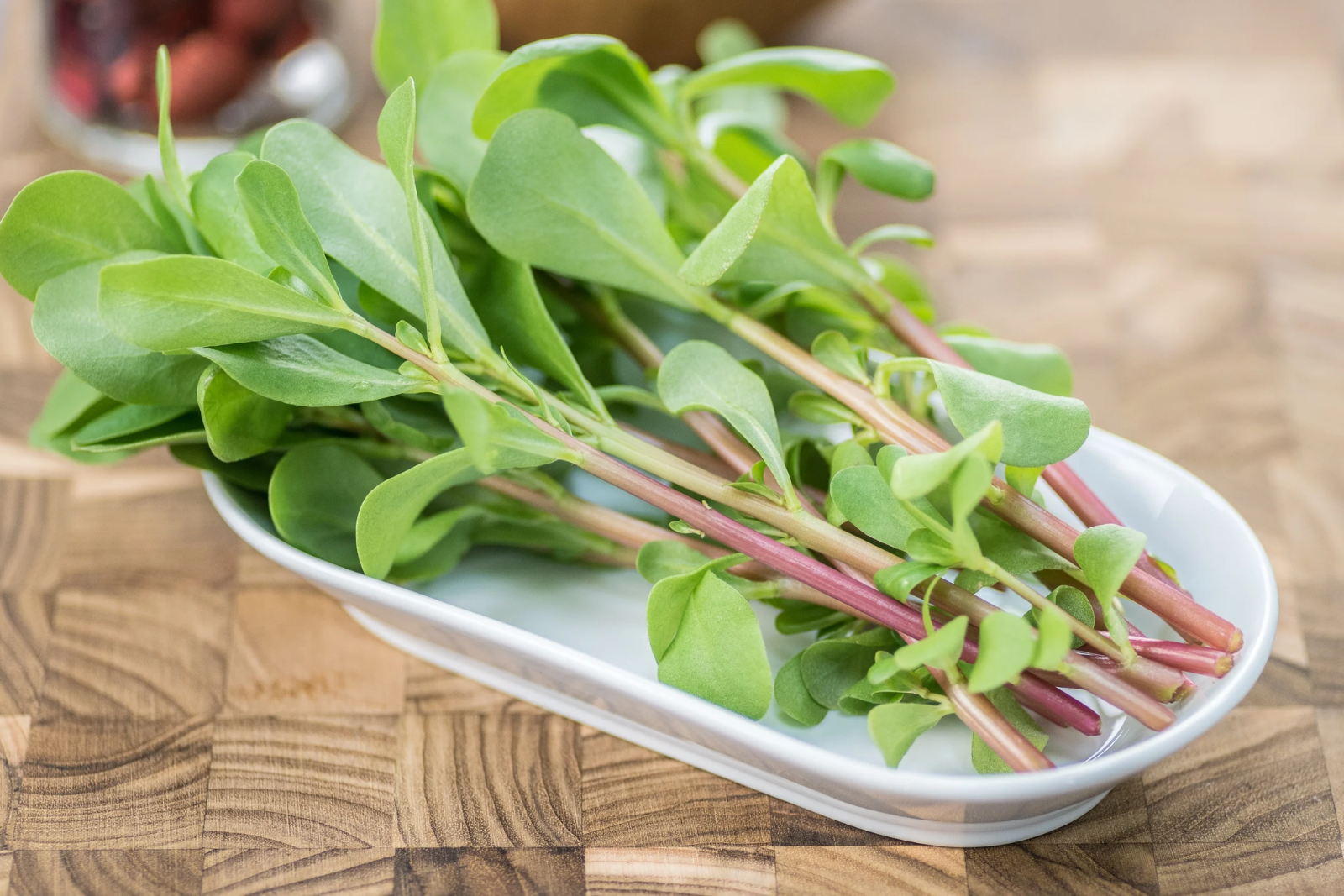
Purslane is a leafy green vegetable that is packed with nutrients and has a slightly tangy flavor. It is often used in salads, stir-fries, and soups. If you have a surplus of purslane and want to preserve it for future use, freezing is a great option. Freezing purslane allows you to enjoy its fresh taste and nutritional benefits even when it’s out of season. In this article, we will guide you through the process of freezing purslane, ensuring that it retains its quality and flavor for later use.
Here’s a step-by-step guide on how to freeze purslane:
- Step 1: Select fresh purslane
- Step 2: Wash and trim the leaves
- Step 3: Blanch the purslane leaves
- Step 4: Drain and dry the leaves
- Step 5: Arrange the leaves for freezing
- Step 6: Flash-freeze the purslane leaves
- Step 7: Package and seal the purslane leaves
- Step 8: Label and date the packages
- Step 9: Store in the freezer
Step 1: Select fresh purslane
When it comes to freezing purslane, selecting fresh and vibrant leaves is crucial to ensure the best quality and taste after freezing. Freshly harvested purslane contains higher levels of nutrients and has a more appealing texture compared to older, wilted leaves.
Crisp, green leaves indicate that the purslane is still fresh and hasn’t started to deteriorate. Avoid selecting leaves that are yellowing or showing any signs of wilting or browning, as these are indications of age and potential spoilage.
Freshly harvested purslane has a mild and slightly tangy flavor, which is one of its distinctive characteristics. By choosing fresh leaves, you can preserve this natural flavor during the freezing process, allowing you to enjoy the same taste when you thaw and use the purslane later.
Furthermore, fresh purslane leaves have a better texture, being tender and crisp. They retain their delicate crunchiness and vibrant color when properly frozen. This is especially important if you plan to use the frozen purslane in salads or other dishes where texture plays a significant role.
To ensure the freshness of your purslane, consider growing it in your garden or purchasing it from local farmers’ markets or reputable grocery stores. By personally selecting fresh purslane, you have more control over its quality and can confidently proceed with the freezing process, knowing that you are starting with the best possible ingredients.
Step 2: Wash and trim the leaves
Properly washing and trimming the purslane leaves before freezing is essential to ensure that they are clean and free from any impurities. This step helps maintain the overall quality and hygiene of the frozen purslane.
When harvesting purslane, it can come into contact with soil, dust, or other contaminants. Washing the leaves under cold running water helps remove these unwanted particles, including dirt, sand, or any residual chemicals that might be present. This is particularly important if you’re using homegrown purslane or if it was purchased from a source where it may have been exposed to environmental factors.
To wash the purslane leaves, gently hold them under the running water, allowing the water to flow over each leaf. Use your fingers to rub the leaves gently, ensuring that all surfaces are thoroughly rinsed. This helps dislodge any trapped dirt or debris. The cold water not only cleans the leaves but also helps maintain their crispness and color.
After washing, it’s important to remove excess moisture from the leaves. Pat them dry using a clean kitchen towel or paper towels. This step prevents the purslane from becoming waterlogged, which can negatively affect its texture and increase the risk of freezer burn.
In addition to washing, it’s advisable to trim off any tough stems or damaged leaves. Tough stems can be fibrous and less enjoyable to eat, while damaged leaves may have compromised texture or flavor. By removing these undesirable parts, you ensure that only the tender and edible portions of the purslane are preserved.
Trimming the purslane leaves also allows for better packaging and storage. Removing excess stems and damaged leaves helps to compact the purslane, making it easier to arrange and freeze in an organized manner.
Can I freeze purslane stems?
Yes, you can freeze purslane stems along with the leaves. However, keep in mind that the stems may have a slightly different texture after freezing. It’s important to trim any tough or fibrous parts of the stems before freezing to ensure the best eating experience.
Step 3: Blanch the purslane leaves
Blanching is a crucial step in the process of freezing purslane as it helps to preserve its color, texture, and nutritional value. Blanching involves briefly immersing the purslane leaves in boiling water, followed by rapid cooling in ice water to halt the cooking process. This technique is widely used for various vegetables and leafy greens before freezing.
Blanching serves several purposes when it comes to freezing purslane. Firstly, it helps to inactivate enzymes present in the leaves that can cause color and texture changes over time. These enzymes, if left active, can lead to browning or loss of vibrancy in the frozen purslane. Blanching deactivates these enzymes, ensuring that the purslane retains its appealing green color even after freezing.
Secondly, blanching helps to maintain the texture of the purslane. The brief exposure to boiling water partially cooks the leaves, making them slightly softer while still retaining their crispness. This blanching process helps to preserve the delicate crunch and texture of the purslane, allowing it to retain its desirable mouthfeel when thawed and used in recipes.
Lastly, blanching helps to preserve the nutritional value of purslane. While some nutrient loss is inevitable during the freezing process, blanching helps to minimize it. The short blanching time helps to retain a significant portion of the vitamins, minerals, and antioxidants present in purslane, ensuring that the frozen leaves remain nutritious.
To blanch purslane leaves, bring a large pot of water to a rolling boil. Meanwhile, prepare a bowl of ice water. Submerge the rinsed and trimmed purslane leaves in the boiling water for about 30 seconds to 1 minute. The exact blanching time may vary depending on the thickness and tenderness of the leaves. It’s important to monitor the leaves closely to prevent overcooking.
Can I freeze purslane without blanching it?
Blanching purslane before freezing is recommended as it helps preserve the color, texture, and nutritional value of the leaves. Blanching deactivates enzymes and reduces the risk of browning or loss of vibrancy. While it is possible to freeze purslane without blanching, the quality and shelf life may be compromised.
Step 4: Drain and dry the leaves
After blanching purslane leaves and cooling them in ice water, it is essential to drain and dry them thoroughly before proceeding with the freezing process. This step helps remove excess moisture, which can lead to freezer burn or the formation of ice crystals on the leaves.
Draining the blanched purslane leaves ensures that any residual water from the blanching and ice water bath is removed. Excess moisture can cause the leaves to stick together when frozen, making them difficult to separate and use later. Additionally, the presence of excess moisture can negatively impact the quality and texture of the frozen purslane, resulting in a less desirable end product.
To drain the purslane leaves, carefully remove them from the ice water bath and allow any excess water to drip off. You can gently shake the leaves or use a colander to facilitate the draining process. It’s important to give the leaves enough time to drain thoroughly to remove as much water as possible.
After draining, it’s crucial to dry the purslane leaves to eliminate any remaining moisture. Gently pat them dry with a kitchen towel or paper towels, ensuring that you remove any water droplets clinging to the leaves. Take care not to crush or damage the tender leaves during the drying process.
Ensuring that the purslane leaves are completely dry before proceeding to the next step is crucial for optimal freezing results. This step helps prevent the formation of ice crystals on the leaves, which can affect their texture and quality. Dry leaves also freeze more efficiently and maintain their individuality, allowing for easy portioning and usage when thawed.
Step 5: Arrange the leaves for freezing
Once the blanched and dried purslane leaves are ready, it’s important to arrange them properly before freezing. This step ensures that the leaves freeze quickly and evenly, preserving their individual integrity and making them easier to handle and store.
To arrange the purslane leaves, you can use a baking sheet or tray that fits into your freezer. It’s important to lay the leaves in a single layer without overcrowding them. Overcrowding can cause the leaves to stick together, making it difficult to separate them later when you only need a portion for your recipes.
By arranging the leaves in a single layer, you allow for efficient and even freezing. Each leaf is exposed to the cold air in the freezer, ensuring that it freezes quickly and uniformly. This helps maintain the texture, color, and overall quality of the purslane leaves.
If you have a large quantity of purslane leaves, it may be necessary to use multiple baking sheets or work in batches. This ensures that each leaf has enough space around it and isn’t squished or overlapping with other leaves. Adequate spacing between the leaves promotes better freezing and prevents them from clumping together.
Step 6: Flash-freeze the purslane leaves
Flash-freezing purslane leaves is a crucial step in the freezing process. Flash-freezing involves rapidly freezing the leaves individually, which helps maintain their quality, prevent them from sticking together, and enables easy portioning when needed.
To flash-freeze the arranged purslane leaves, place the tray in the freezer and allow them to freeze for about 1 to 2 hours, or until they are firm. The exact freezing time may vary depending on the thickness and moisture content of the leaves.
Flash-freezing purslane leaves individually offers several advantages. Firstly, it prevents the leaves from clumping together during freezing. When the leaves freeze individually, they are less likely to stick together, allowing you to easily separate and use the desired amount without thawing the entire batch.
Secondly, flash-freezing preserves the individual integrity of each leaf. By freezing them quickly, the water molecules inside the leaves form smaller ice crystals, minimizing potential damage to the cell structure. This helps the purslane leaves retain their texture, crispness, and overall quality when thawed.
Furthermore, flash-freezing provides better control over portioning. Once the purslane leaves are individually frozen, you can transfer them to a freezer bag or container for long-term storage. This allows you to remove as many leaves as you need for a recipe without having to thaw the entire batch. Flash-freezing gives you the flexibility to use the frozen purslane leaves in smaller or larger quantities as desired.
Step 7: Package and seal the purslane leaves
After flash-freezing the purslane leaves and ensuring they are firm and individually frozen, it’s time to package and seal them properly. Packaging the frozen leaves in airtight freezer bags or containers is crucial to protect them from freezer burn and maintain their quality during storage.
Transfer the frozen purslane leaves from the tray into airtight freezer bags or containers. Freezer bags specifically designed for long-term freezing are recommended as they provide a barrier against air and moisture. Alternatively, you can use freezer-safe rigid containers with tight-fitting lids.
When packaging the purslane leaves, it’s important to remove as much air as possible from the bags or containers. Excess air can contribute to freezer burn, which can negatively impact the texture and flavor of the frozen leaves over time. Squeeze the bags or press down on the containers gently to remove air pockets before sealing them.
Seal the bags or containers tightly to create an airtight seal. This ensures that the frozen purslane leaves are protected from exposure to air, which can lead to oxidation and loss of quality. A secure seal also prevents moisture from entering the packaging and causing freezer burn.
Labeling the packages with the contents (purslane leaves) and the date of freezing is also recommended. This helps you keep track of the frozen purslane and ensures that you use them within a reasonable timeframe. Proper labeling allows for easy identification and prevents confusion in the freezer.
Step 8: Label and date the packages
Labeling and dating the packages of frozen purslane is a crucial step in maintaining organization and ensuring the freshness of your frozen produce. Properly labeled packages allow you to easily identify and keep track of the contents, enabling you to use the purslane within an appropriate time frame.
Labeling each package with the contents, in this case, “purslane leaves,” provides clarity and avoids confusion in your freezer. It allows you to distinguish the purslane from other frozen items and quickly locate it when needed. Clear labeling also helps prevent accidental thawing or misuse of the frozen purslane.
In addition to labeling the contents, it’s important to date the packages with the freezing date. This information allows you to monitor the duration of storage and use the purslane within a reasonable timeframe. Frozen purslane is best used within 8 to 12 months for optimal quality and flavor. By dating the packages, you can easily identify the oldest ones and prioritize their use before the newer ones.
Keeping track of the freezing date helps you avoid using frozen purslane that has been stored for too long, as it may experience quality degradation over time. Using the oldest packages first ensures that you enjoy the best taste and texture from your frozen purslane.
Proper labeling and dating of the packages also facilitate inventory management. By having a clear record of the frozen purslane, you can plan your meals and recipes accordingly, ensuring that you make the most of your frozen supply.
Step 9: Store in the freezer
Once the packages of purslane leaves are labeled, dated, and properly sealed, it’s time to store them in the freezer. Proper storage ensures that the frozen purslane maintains its quality, flavor, and nutritional value for an extended period.
When placing the sealed packages in the freezer, it’s important to consider maximizing space. Store the packages in a flat position, arranging them in a way that optimizes the use of available freezer space. This allows for efficient organization and makes it easier to locate and access the purslane leaves when needed.
Maintaining a consistent freezer temperature is crucial for preserving the quality of the frozen purslane. Set your freezer temperature to below 0°F (-18°C). This low temperature prevents bacterial growth and enzymatic activity, effectively preserving the texture, color, and flavor of the purslane leaves.
Fluctuations in temperature can negatively affect the quality of the frozen purslane. Temperature fluctuations may cause thawing and refreezing, resulting in the formation of ice crystals, texture changes, and loss of flavor. Keeping the freezer temperature consistently below 0°F (-18°C) helps ensure that the purslane remains in optimal condition during storage.
It’s important to note that opening the freezer frequently or leaving the freezer door open for extended periods can cause temperature fluctuations. Minimize the time the freezer door is open and try to retrieve the frozen purslane quickly to maintain a stable temperature inside.
Remember to periodically check and rotate the packages to use the oldest ones first, maintaining a good rotation system that prevents prolonged storage and potential quality degradation. With proper storage, you can enjoy the convenience of having frozen purslane readily available whenever you want to add a nutritious and flavorful touch to your meals.
How long can frozen purslane be stored?
When properly stored in airtight packaging and kept at a consistent temperature below 0°F (-18°C), frozen purslane can be stored for up to 8 to 12 months. However, for optimal quality and flavor, it is recommended to use the frozen purslane within 6 to 8 months.
Other related questions
How do I defrost purslane?
To defrost purslane, you can transfer the frozen leaves from the freezer to the refrigerator and allow them to thaw slowly. Alternatively, you can place the sealed package of purslane in a bowl of cold water and change the water every 30 minutes until thawed. Avoid using hot water or microwave to defrost, as these methods can negatively affect the texture and flavor of the purslane. Once thawed, gently pat the leaves dry before using them in your recipes.
Can I refreeze purslane?
It is generally not recommended to refreeze purslane once it has been thawed. Refreezing can affect the quality, texture, and flavor of the purslane, leading to a loss of its desirable attributes. It is best to portion and use the thawed purslane within a suitable time frame to ensure the best culinary experience.
How do I know if the purslane has gone bad after being frozen?
To determine if frozen purslane has gone bad, you should observe its appearance, smell, and texture. If the purslane exhibits significant discoloration, a foul odor, or a slimy texture, it is likely spoiled and should be discarded. Additionally, if there are signs of freezer burn, such as dry, discolored patches on the leaves, the quality and taste of the purslane may be compromised.
Can I use frozen purslane in raw dishes, such as salads?
While frozen purslane can be used in raw dishes, such as salads, it’s important to note that the texture may change slightly after freezing. Thawed purslane leaves tend to be softer compared to fresh ones. Consider using frozen purslane in cooked dishes or blending it into smoothies if you prefer a more tender texture.
Can I freeze purslane that has already been cooked?
Yes, you can freeze cooked purslane. Allow it to cool completely before portioning and packaging it in airtight containers or freezer bags. Properly sealed and labeled, cooked purslane can be frozen and enjoyed later, retaining its flavor and nutritional value.
Can I freeze purslane puree or pesto?
Absolutely! Puréed purslane or purslane pesto can be frozen in ice cube trays or sealed containers for convenient portioning. Ensure that the puree or pesto is tightly sealed and labeled before freezing.
What are some recommended uses for frozen purslane?
Frozen purslane can be used in a variety of dishes, such as soups, stews, stir-fries, and smoothies. It adds a nutritional boost and a touch of tanginess to your culinary creations. Experiment with different recipes and find your favorite way to incorporate frozen purslane.
Can I freeze purslane in oil or vinegar?
It is not recommended to freeze purslane directly in oil or vinegar. These liquids can solidify and create texture issues when frozen. Instead, blanch and freeze the purslane leaves first, then use them in oil or vinegar-based dishes when thawed.
Can I freeze purslane with other vegetables?
Yes, you can freeze purslane together with other vegetables. However, keep in mind that different vegetables have varying freezing requirements. It is advisable to blanch and freeze each vegetable separately before combining them for storage.

